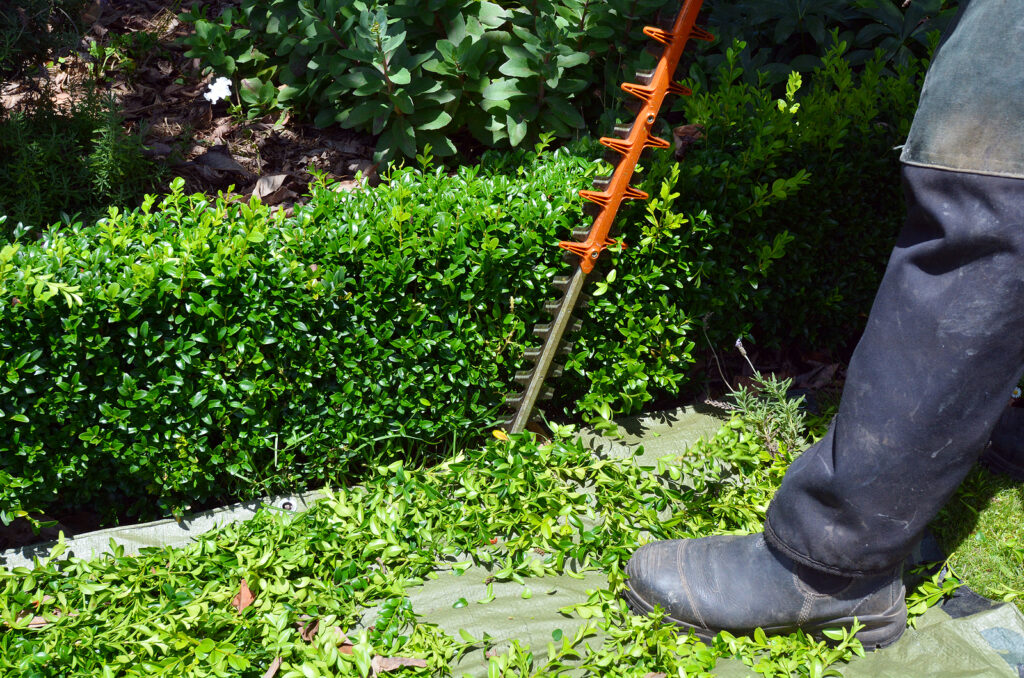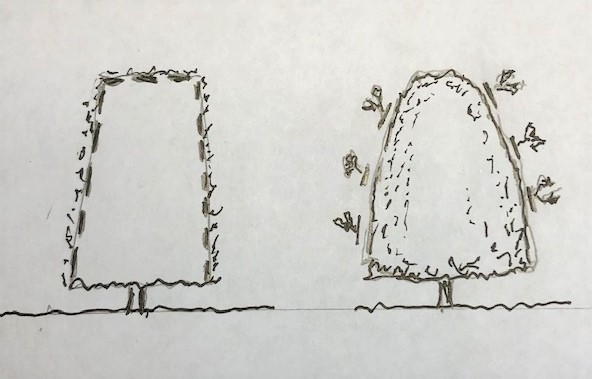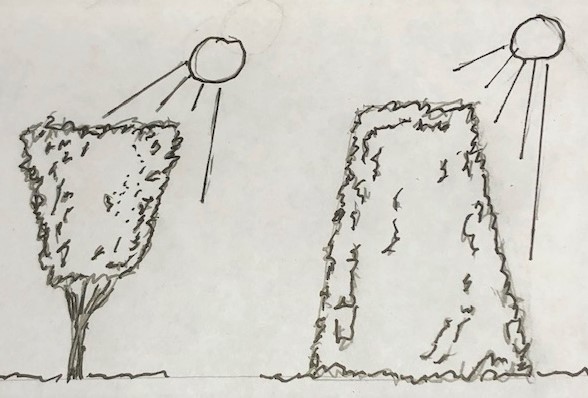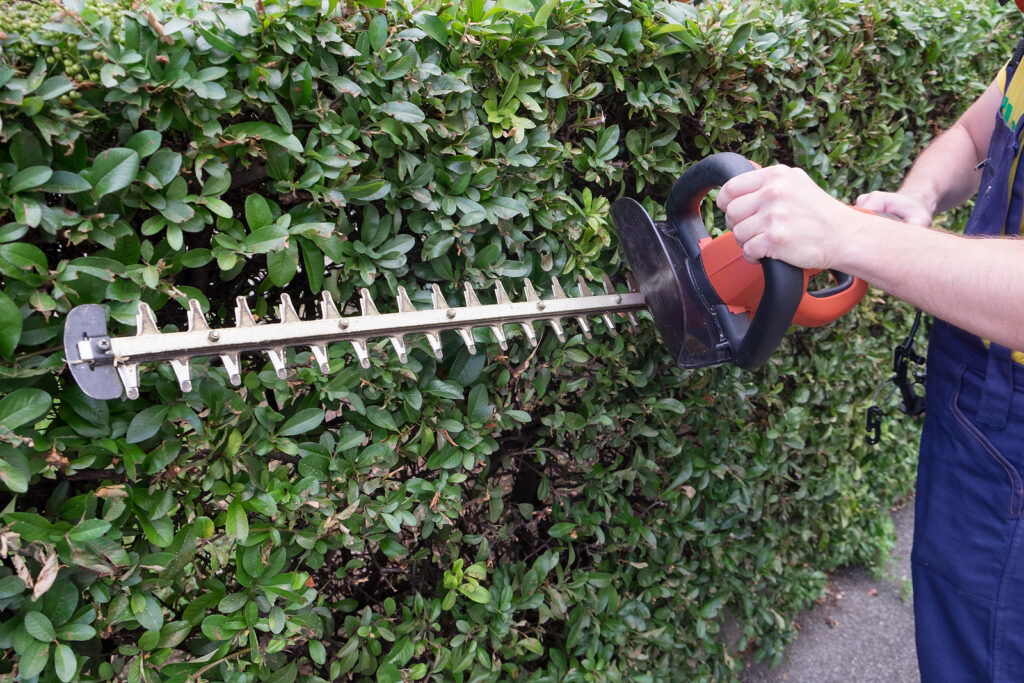Once a hedge is established, regular pruning and maintenance must follow to keep the growth dense and healthy.
The frequency, timing, and degree of pruning depends on the style of the hedge and hedge plants chosen.
Hedges are usually described as formal or informal, depending on how they are pruned

Pruning formal hedges
Formal hedges are commonly sheared so that their sides are perfectly flat, and the top is either flat or rounded. Formal hedges look rigid and smooth. They serve as walls or fences in a landscape.
The aim of pruning a formal hedge is to establish and ensure dense growth and to produce a neat outline.
Prune a formal hedge at a slight angle with the base wider than the top. The angle or slope of the hedge permits an even distribution of sunlight from the top to the bottom; this reduces the loss of foliage at the base or bottom of the hedge due to lack of sunlight—sometimes called “shading out.” The exception is small hedges; they can have vertical sides because the top of a small hedge will not shade out the bottom.
The top of a formal hedge can be flat or gently rounded. A gently rounded head will be less vulnerable to wind damage as wind is deflected down its sloping sides. A rounded top will not accumulate snow the way a flat-topped hedge will; the weight of snow can damage or break branches.

Pruning informal hedges
Informal hedges are basically screens. Plants in an informal hedge are allowed to develop much of their natural shape. Informal hedges can be shaped, but the outline of an informal hedge is not as severe as a formal hedge.
Informal hedges are selectively pruned; that is wayward shoots or branches are trimmed away to maintain the general and natural outline of the plants in the hedge. The overall appearance of an informal hedge is softer than that of a formal hedge.
Flowering and fruiting hedges are commonly informal or naturalistic. Severe pruning required of formal hedges would remove flower buds and fruits of flowering and fruiting hedge plants.
Flowering hedges should be pruned once a year immediately after blooming. That will give plants a year to set new buds for flowering the following bloom time.
Pruning semiformal hedges
Hedges comprised of plants with large leaves such as laurel and privets are usually that are used as walls or divisions within a garden are often termed semi-formal hedges. They look much like a formal hedge, but they are not sheared; they are selectively pruned to form. The leaves of plants in semi-formal hedges are so large that severe pruning might cause their cut edges to brown and leaving the hedge unsightly.
To prune a semi-formal hedge, cut individual shoots back to within the foliage canopy to disguise pruning wounds.

General pruning tips
- When establishing a hedge, cut plants back to 12 inches after planting; a severe pruning will force plants to branch out close to the ground. These low branches will later hide bare trunks.
- Allow a strong central stem to develop in the first year or two. This will be the central frame for later branchy growth.
- Taper a hedge so that the bottom is wider than the top. This allows light to reach the entire hedge surface; if lower branches are shaded by the top of a hedge that is wide than the bottom, shaded leaves will die and eventually leave bare spots in the hedge.
- Cut back runaway shoots including leaders; this will encourage the plant to develop dense growth.
- Cut back new growth by at least half to encourage the hedge to branch densely.
- Vigorous plants or shoots may need to be pruned more than once a year.
- Give mature hedges periodic trimmings to maintain size and form. Maintain tapered sides.
- Prune during a flush of new growth; this will encourage the plant to do more branching.
- In cold-winter regions, prune not later than late summer; this will give new growth time to mature before hard frosts come in autumn.
- When a hedge develops dead areas where there is no new growth, either replace the dead plant or replace the entire hedge and begin training it again.

Tools for hedging
- Most formal hedges are cut with shears for an electric trimmer. To use shears, keep the blades parallel to the line of the hedge; this will ensure the sides are cut level and flat. When using an electric trimmer, keep the blades parallel to the hedge and use a wide sweeping motion.
- Prune informal and semi-formal hedges with a hand pruner. To prune away long shoots, follow the stem back into the canopy to make the cut; this way cuts will not be hidden by foliage.
- To top a formal hedge, stretch a taut string horizontally between two upright posts; cut the top of the hedge along this line.
- To taper or round a hedge, cut a template of the required shape from plywood. Place the template on the hedge and cut following the line of the template, moving the template along as you prune.
Also of interest:















